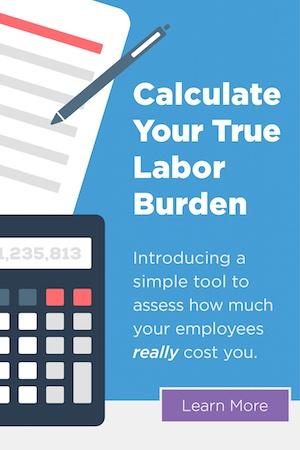By David Slaughter, JD
The massive appropriations and COVID-19 relief legislation that President Trump signed December 27, 2020, includes a number of provisions affecting employers’ health benefit programs. These include arbitration procedures for “surprise billing” situations, a new layer of transparency requirements, added flexibility for flexible spending accounts (FSAs), and disclosure rules regarding mental health parity.
Surprise Billing
The Consolidated Appropriations Act, 2021 (CAA) includes the No Surprises Act, the product of repeated congressional efforts this year to protect patients from unexpected medical bills. These provisions, which take effect in 2022, allow patients to pay only the in-network cost-sharing amount for out-of-network services provided on an emergency basis and in certain other situations.
If a group health plan covers any emergency services, it must cover all such services, whether in- or out-of-network, without preauthorization and pay the healthcare provider the difference between the in-network cost-sharing and the out-of-network rate.
If the provider considers this payment inadequate, and negotiations fail to resolve the disagreement within 30 days, either party may initiate independent dispute resolution (IDR). The No Surprises Act spells out the IDR process by which an arbitrator certified by the U.S. Department of Labor (DOL) will weigh the competing claims, and the factors that may and may not be considered.
Transparency
The CAA includes a series of new transparency requirements that take effect in 2022. These are in addition to the detailed disclosure mandates that the Trump administration finalized last fall.
In plan years beginning on or after January 1, 2022, health plans must provide certain information on the cost of a service in advance of treatment or on request. This “advanced explanation of benefits” (AEOB) will be triggered by receiving a healthcare provider’s “good faith estimated amount” as required by a separate provision.
Between 1 and 3 business days after receiving this notice from the provider (depending on the timing of the service), the plan must issue an AEOB to the individual that includes the following:
- Whether or not the healthcare provider or facility is in the plan’s network;
- If the provider is in-network, the contracted rate for this service;
- If the provider is out-of-network, how to obtain information on in-network providers;
- The good faith estimate included in the notification received from the provider; and
- Estimates of the respective amounts for which the plan and individual are responsible.
The CAA also prohibits plans from agreeing to “gag clauses” in their contracts with healthcare providers, third-party administrators (TPAs), or other service providers. That is, plans may not agree to restrictions on:
- Providing provider-specific cost or quality data to participants or to the plan sponsor;
- Requesting de-identified claims and encounter data, consistently with federal privacy laws, including financial and provider information for specific claims; and
- Sharing the above data with the plan’s “business associates,” as defined by the Health Insurance Portability and Accountability Act.
Certain service providers to group health plans will be required to make detailed disclosures of their services and fees to a responsible plan fiduciary. “Covered service providers” are defined as those paid $1,000 or more for brokerage or consulting services.
FSA Flexibility
The CAA adds to the FSA flexibility granted by the Coronavirus Aid, Relief, and Economic Security (CARES) Act. An FSA’s “grace period” for spending unused amounts, usually limited to 2-1/2 months after the end of a plan year, may be extended for a full year—e.g., until the end of 2021 for amounts from 2020. It is up to the plan sponsor whether to permit such an extension; a plan with a carryover feature may choose instead to allow an unlimited carryover rather than the usual $550 maximum.
In 2021, participants in a health or dependent care FSA may be allowed to change their contribution amount on a prospective basis at any time during the year, regardless of whether any of the usual criteria for a midyear election change are met. Employees who stop participating in a FSA during 2021 or 2022 may be given until the end of the year to incur medical expenses and spend down their remaining balances.
“Plan sponsors should assess whether they want to take advantage of the relief offered to FSAs under the CAA, and discuss the implementation and communication of these changes with their [TPAs],” Winston & Strawn attorneys observed in a blog post.
Reduced access to healthcare and childcare services may have left many employees with excess funds in their FSAs, “and plan sponsors should determine whether utilizing the relief under the CAA can help avoid forfeiture of these amounts,” the attorneys added. “In addition, participants have already elected amounts to contribute to FSAs for the 2021 plan year and may need to adjust goal amounts to take into account these new carryover and grace period features.”
Mental Health Parity
The CAA places additional requirements on plan sponsors to demonstrate that mental health and substance use disorder (MH/SUD) benefits are being provided on a par with medical/surgical benefits, in compliance with the existing Mental Health Parity and Addiction Equity Act (MHPAEA).
The new provisions focus on “nonquantitative treatment limitations” (NQTLs), including residential treatment exclusions, preauthorization requirements, and “fail-first” protocols, which have been an ongoing sore point in MHPAEA implementation. Group health plans that impose NQTLs must perform comparative analyses of how these limits are designed and applied, and have them available by February 10 in case the DOL or other agency requests them.
These analyses must address:
- The specific plan or coverage terms regarding the NQTLs and a description of all MH/SUD and medical/surgical benefits to which each such term applies in each benefits classification;
- The factors used to determine that the NQTLs will apply to MH/SUD and medical/surgical benefits;
- The evidentiary standards used for these factors; and
- A demonstration that the processes, strategies, evidentiary standards, and other factors used to apply the NQTLs to MH/SUD benefits are written and applied no more stringently than those used for medical/surgical benefits in that benefits classification.
“Compliance with Mental Health Parity and, particularly, the imposition of NQTLs have been part of subregulatory guidance in recent years, and we have also seen the DOL request that group health plans demonstrate compliance with Mental Health Parity on audit,” Morgan Lewis attorneys Saghi Fattahian and Lindsay Goodman observed in a blog post. “Plan sponsors now have a statutory obligation to ensure the comparative analyses are performed and should follow up with their TPAs and take steps internally, as necessary, to ensure they are ready to demonstrate compliance with these new requirements.”
David A. Slaughter, JD, is a Senior Legal Content Specialist. His specialties include employee benefits and privacy compliance.
This communication is for informational purposes only; it is not legal, tax or accounting advice; and should not be acted upon as such. This post may contain hyperlinks to forms, materials, and websites operated by parties other than UniqueHR. Such hyperlinks are provided for reference only. UniqueHR does not control such websites and is not responsible for their content.


